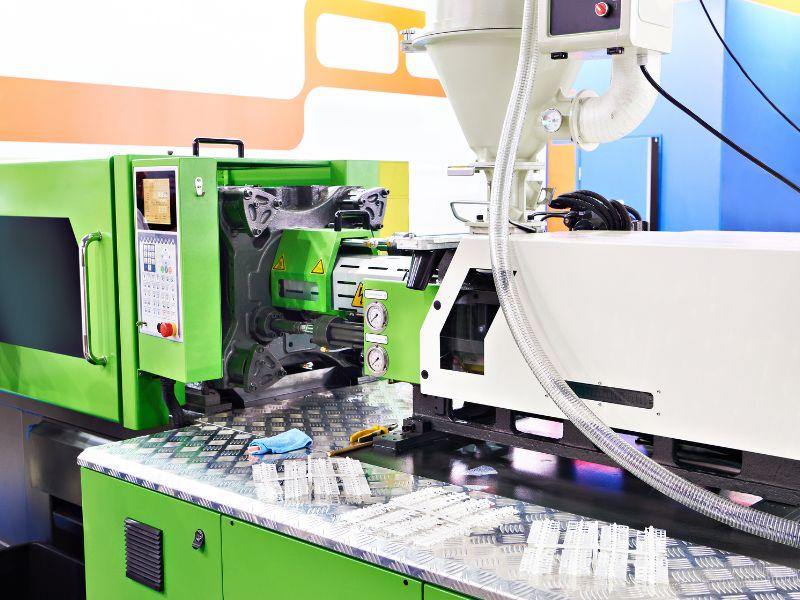Transforming Manufacturing: The Ascent of Digital Injection Forming
The manufacturing landscape is experiencing a major transformation, propelled by developments in tech and a push towards greater efficiency. Among these innovations, digital injection molding is a game changer for the sector. This modern approach incorporates digital tools and automated processes into the injection molding process, allowing companies to produce highly complex parts with exceptional precision and speed. As companies increasingly seek methods to streamline production and reduce waste, digital injection molding offers a attractive solution.
Injection molders play a leading role in this evolution, leveraging sophisticated software and high-performance materials to enhance their operations. By adopting digital technologies, these manufacturers can optimize their processes, improve product quality, and accelerate time-to-market. This article will explore the key innovations transforming the future of injection molding, exploring how they are empowering manufacturers to meet the demands of a rapidly changing marketplace while maintaining market position and environmental responsibility.

The Progression of Injection Forming
Injectable molding has evolved notably from its inception in the 19th century. The process began with simple hand-operated devices, enabling manufacturers to make basic shapes from existing materials. The introduction of automated systems in the 1960s transformed production capabilities, allowing for greater productivity and exactness in manufacturing plastic parts. This marked the beginning of a new era where large-scale production became feasible, considerably reducing the cost per unit and broadening the market for molded products.
As the industry advanced, developments in materials and machinery continued to shape the advancement of injectable molding. The introduction of thermoplastics provided new possibilities for lightweight, resilient products, which fostered a larger application of injection molding across multiple sectors including vehicle, household items, and electronic devices. The arrival of computer numerical control (CNC) technology further improved the manufacturing process, permitting more precise tolerances and intricate geometries, while shortening lead times and enhancing overall productivity.
In the last years, the emergence of digital technologies has ushered in the new phase of injectable molding innovation. The integration of automation, data analytics, and Industry 4.0 principles has revolutionized how molding manufacturers function. Smart factories equipped with IoT sensors enable real-time monitoring of machinery and processes, facilitating predictive maintenance and optimized production flows. This digital shift not only improves operational efficiency but additionally empowers manufacturers to respond quickly to market demands, granting a superiority in a rapidly evolving landscape. ### Benefits of Digital Transformation
Digital transformation in injection molding unlocks countless advantages that significantly enhance workflow efficiency. By adopting innovative technologies, manufacturers can streamline processes, decreasing the time spent on tasks that were previously manual. This not just speeds up production but additionally minimizes human error, resulting in consistent quality in the final products. Enhanced data analytics allows injection molder s to track performance in real time, enabling quick adjustments that enhance machine output.
An additional key benefit is enhanced design flexibility. With digital tools, manufacturers can easily adapt and tweak designs without incurring significant costs associated with conventional techniques. Rapid prototyping and simulation software enable companies to evaluate and improve designs before production starts, guaranteeing that the final products align with customer specifications. This agility in design means that manufacturers can respond more effectively to market demands and evolving consumer preferences.
Finally, digital transformation facilitates better communication and collaboration across the whole supply chain. By leveraging cloud-based platforms, stakeholders can exchange information smoothly, leading to more smart decision-making. This interconnectedness improves inventory management and reduces lead times, consequently contributing to a more sustainable production environment. As a result, injection molders can not only amplify productivity but further improve their market position in a fast-paced industry.
Upcoming Developments in Injection Molding
The outlook of injection molding is poised to be defined by advancements in automation and artificial intelligence. As manufacturers aim to improve efficiency and lower costs, the adoption of intelligent systems into injection molding processes is becoming increasingly prevalent. Automated systems can simplify operations by optimizing cycle times and reducing human error. This transition not only boosts productivity but also allows for enhanced precision and consistency in production, leading to superior products.
Sustainability is another important trend influencing the injection molding industry. As ecological issues grow, manufacturers are seeking ways to minimize waste and employ eco-friendly materials. The embrace of biodegradable plastics and recycled materials is on the rise, making it possible to create items that are not only resilient but also sustainable. Companies are also implementing closed-loop systems to reuse scrap materials back into the production process, which reduces their carbon footprint.
Moreover, the combination of 3D printing with conventional injection molding is paving the way for creative product design and manufacturing flexibility. This combined approach allows for swift prototyping and low-volume production, allowing companies to quickly respond to market demands and customize products to meet individual customer needs. As these advancements continue to merge, injection molders will be equipped to respond more effectively to the fast-paced changes in consumer preferences and industry standards.